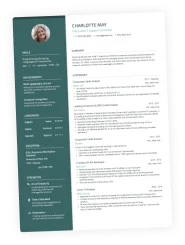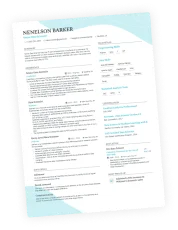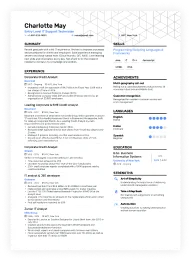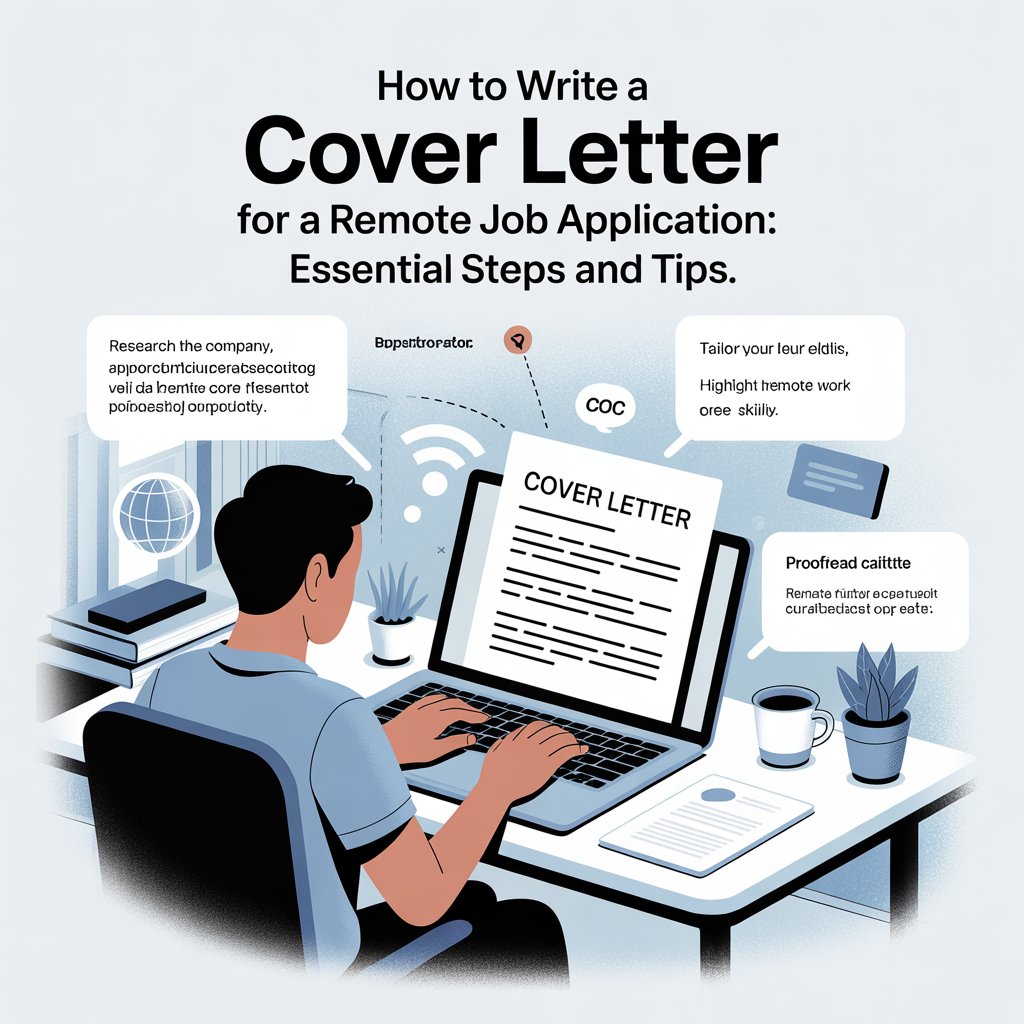Crafting a standout cover letter is your chance to shine in the job application process. It’s not just a formality; it’s your opportunity to showcase your qualifications and make a strong first impression. A well-written cover letter can set you apart from other candidates and highlight why you’re the perfect fit for the role. Here are some tips to help you effectively highlight your cover letter qualifications and grab the attention of hiring managers.
Key Takeaways
- Tailor your cover letter for each job application to reflect the specific qualifications they seek.
- Use examples and metrics to demonstrate your skills and past achievements effectively.
- Research the company to align your qualifications with their needs and culture.
- Incorporate keywords from the job description to improve compatibility with applicant tracking systems.
- Keep your cover letter professional, concise, and free of errors to make a strong impression.
Understanding Cover Letter Qualifications
Defining Cover Letter Qualifications
So, what exactly are cover letter qualifications? It’s more than just listing your skills. It’s about showing the hiring manager that you understand what they need and that you have what it takes to meet those needs. Think of it as translating your resume into a compelling story that directly addresses the job description. It’s about connecting the dots for them, making it crystal clear why you’re the right person for the job. It’s not just repeating your resume; it’s adding context and personality.
Why Qualifications Matter in Job Applications
Why bother with highlighting qualifications? Because in a stack of applications, you need to stand out. A cover letter lets you do that. Research shows that a cover letter can make your application 38% more likely to get noticed. It’s your chance to show you’ve done your homework and that you’re genuinely interested in the role. It also helps you prepare for an interview. You want to connect your skills and experience to the company’s needs and illustrate why you’d be a great employee. A cover letter can give you the competitive edge.
Here’s why qualifications matter:
- Demonstrates Understanding: Shows you get what the job requires.
- Highlights Relevance: Connects your experience to their needs.
- Adds Personality: Makes you more than just a resume.
A cover letter is a narrative piece explaining why you’re applying and why you’re a good fit for the job. It should be highly personalized for each job application.
Common Misconceptions About Qualifications
One big mistake is thinking your resume speaks for itself. It doesn’t always. Another misconception? That a cover letter is just a formality. It’s not! It’s a chance to demonstrate how your professional experience aligns with the job. People also think listing skills is enough. It’s not; you need to show how you’ve used those skills. Don’t just say you’re a leader; describe a time you led a team to success. Don’t just say you have communication skills; give an example of when you used them effectively. It’s about showing, not just telling.
Tailoring Your Cover Letter
Researching the Company
Before you even begin writing, do your homework. Understand the company’s mission, values, and recent achievements. Check out their website, social media, and news articles. Knowing about the company shows you’re genuinely interested, not just sending out generic applications. This research will help you tailor your letter to show how you fit into their specific environment. It’s about demonstrating that you’ve taken the time to understand what they do and how you can contribute. Understanding the company’s mission is key.
Aligning Qualifications with Job Requirements
Carefully review the job description and identify the key skills and experiences they’re seeking. Then, think about your own background and pinpoint the instances where you’ve demonstrated those skills. Your cover letter should directly address each requirement, showing how you meet or exceed their expectations. Don’t just list your qualifications; explain how they relate to the specific needs of the role. This alignment is what makes your application relevant and compelling. It’s about making it easy for the hiring manager to see why you’re a good fit.
Personalizing Your Approach
Generic cover letters get generic results. Take the time to personalize each letter to the specific company and role. Address the hiring manager by name if possible. Mention something specific that you admire about the company, or how you admire their work, products, or services. This shows that you’re not just interested in any job, but you’re particularly interested in this job with this company. Personalization makes you stand out.
Tailoring your cover letter is not just about changing a few words; it’s about demonstrating that you understand the company’s needs and how your skills and experience can contribute to their success. It’s about showing that you’ve done your research and are genuinely interested in the specific role and company.
Highlighting Relevant Skills
Identifying Key Skills
Before you even start writing, take a good look at the job description. What skills are they really asking for? Don’t just list skills you think are impressive; focus on the ones that directly match what the employer needs. Think about both hard skills (technical abilities) and soft skills (communication, teamwork, problem-solving). Make a list, and then prioritize the skills that are most important for the role. This targeted approach will make your cover letter much more effective. You can also use tools like RoboApply to help you identify these skills.
Using Examples to Illustrate Skills
It’s not enough to just say you have a skill; you need to prove it. For each key skill you mention, provide a specific example of how you’ve used that skill in the past. Use the STAR method (Situation, Task, Action, Result) to structure your examples. This helps you tell a clear and compelling story that shows the employer exactly how you can contribute to their company. For example, instead of saying “I have strong communication skills,” say “In my previous role, I led a team of five in developing and implementing a new communication strategy, which resulted in a 20% increase in team efficiency.”
Quantifying Your Achievements
Whenever possible, use numbers to back up your claims. Quantifiable achievements make your skills much more believable and impressive. Did you increase sales by a certain percentage? Did you reduce costs by a specific amount? Did you improve efficiency in a measurable way? Including these metrics shows the employer the real impact you’ve had in your previous roles. Here’s an example:
“Increased sales by 15% in Q2 by implementing a new customer outreach program.”
Here’s a simple table to illustrate how to quantify achievements:
| Skill | Achievement |
|---|---|
| Project Management | Completed project 2 weeks ahead of schedule |
| Data Analysis | Reduced data processing time by 30% |
| Customer Service | Increased customer satisfaction scores by 10% |
Crafting a Compelling Opening
The Importance of a Strong Introduction
Okay, so you’re staring at a blank page, right? The opening of your cover letter is like the handshake – it’s gotta be good. It’s your chance to grab their attention and make them want to keep reading. Think of it as your personal trailer for the movie that is your career. If the trailer sucks, nobody’s gonna watch the movie, right?
Engaging the Reader from the Start
How do you actually engage someone from the get-go? Start with something that isn’t boring. Don’t just say, “I’m applying for this job.” Yawn. Instead, try to connect with something specific about the company or the role. Maybe you read an article about them, or you’re genuinely excited about a project they’re working on. Show them you’ve done your homework and you’re not just sending out a generic letter. For example, you could mention how your skills align with the job requirements.
Setting the Tone for Your Cover Letter
The tone you set in the beginning will carry through the entire letter. You want to come across as confident, but not arrogant; enthusiastic, but not desperate. It’s a delicate balance. Think of it like this: you’re having a conversation with someone you respect, but you also want to impress them. Keep it professional, keep it positive, and keep it focused on what you can bring to the table.
A good opening makes the hiring manager want to learn more about you. It’s not just about listing your qualifications; it’s about showing your personality and your genuine interest in the opportunity.
Here’s a simple breakdown:
- Start with a hook.
- State the position you’re applying for.
- Briefly mention why you’re a good fit.
Demonstrating Cultural Fit
Understanding Company Culture
Before you even start writing, take some time to really get a feel for the company’s culture. Look beyond the products or services they offer. What’s their mission statement? How do they present themselves on social media? What kind of language do they use in their job postings? All of these things can give you clues about what they value. Understanding this will help you tailor your cover letter to show that you’re not just qualified, but also a good fit for their team. You can find more information about cover letter resources online.
Expressing Enthusiasm for the Role
It’s not enough to just say you’re excited about the job. You need to show it. Be specific about what aspects of the role appeal to you and why. Did something in the job description spark your interest? Do you admire the company’s work in a particular area? Genuine enthusiasm is contagious and can make a big difference in how your application is received. Don’t be afraid to let your personality shine through, but always maintain a professional tone.
Aligning Personal Values with Company Mission
This is where you connect your own beliefs and values with those of the company. If the company emphasizes sustainability, and you’re passionate about environmental issues, mention that. If they value innovation, and you have a track record of creative problem-solving, highlight that.
Showing that your personal values align with the company’s mission demonstrates that you’re not just looking for a job, but a place where you can truly thrive. It shows you’ve done your homework and are genuinely invested in their success. This is a great way to enhance your application.
Here’s an example of how you might structure this:
- Company Value: Innovation
- Your Value: A passion for finding new solutions
- Example: “I was particularly drawn to [Company X]’s commitment to innovation, as demonstrated by [specific project or initiative]. In my previous role, I consistently sought out new and creative approaches to problem-solving, such as [briefly describe a relevant accomplishment].”
Using Keywords Effectively
Identifying Keywords in Job Descriptions
Okay, so you’ve found a job you want. Now what? Time to read that job description very carefully. The job description is your cheat sheet. Companies often use specific words to describe what they’re looking for. These aren’t just random words; they’re keywords cover letter that applicant tracking systems (ATS) and human recruiters use to filter applications. Spotting these keywords is the first step to making sure your cover letter gets noticed. Look for skills, experience levels, specific software, and industry jargon.
Integrating Keywords Naturally
So, you’ve got your keywords. Don’t just stuff them into your cover letter like you’re filling a piñata. That’s a surefire way to get your application tossed. Instead, weave them in naturally. Think about how your experience aligns with the requirements and use the keywords to describe that alignment. For example, if the job description mentions “project management experience,” don’t just write “I have project management experience.” Instead, describe a project you managed, using the keyword in context: “I successfully managed a cross-functional project, delivering it under budget and ahead of schedule.”
Avoiding Keyword Stuffing
Let’s be clear: keyword stuffing is a big no-no. It makes your cover letter sound robotic and insincere. Recruiters can spot it a mile away, and ATS systems are getting smarter at detecting it too. It’s better to use a keyword a few times in a meaningful way than to cram it in every other sentence. Focus on demonstrating your skills and experience in a clear, concise, and engaging way. Think quality over quantity. Remember, the goal is to show you’re a good fit, not just that you can repeat words. A well-written cover letter genuine interest will always beat one that’s overloaded with keywords.
Think of keywords as ingredients in a recipe. You need the right amount to make the dish taste good. Too much, and it’s ruined. The same goes for your cover letter. Use keywords strategically to highlight your qualifications, but don’t overdo it.
Showcasing Past Accomplishments
Selecting Relevant Achievements
When deciding what to include in your cover letter, focus on achievements that directly relate to the job description. Don’t just list tasks you performed; instead, highlight instances where you exceeded expectations or made a significant impact. Think about what the employer is looking for and choose accomplishments that demonstrate you possess those qualities. This shows you understand their needs and can meet them effectively.
Using Metrics to Highlight Success
Whenever possible, quantify your achievements with numbers and data. Metrics provide concrete evidence of your capabilities and make your accomplishments more compelling. Instead of saying you “improved customer satisfaction,” state that you “increased customer satisfaction scores by 15% in six months.” Use specific numbers, percentages, or dollar amounts to illustrate the impact of your work.
Telling a Story with Your Accomplishments
Turn your achievements into a narrative that showcases your skills and problem-solving abilities. Describe the situation, your actions, and the results you achieved. This approach helps the reader understand the context of your accomplishments and appreciate the value you brought to your previous roles. Think of it as painting a picture of your professional journey, highlighting key moments that demonstrate your unique value.
Frame your accomplishments as stories that highlight your problem-solving skills and the positive outcomes you created. This makes your cover letter more engaging and memorable.
Consider this example:
| Achievement | Description | Result |
|---|---|---|
| Increased Sales | Implemented a new marketing strategy | Increased sales by 20% in Q3 |
| Improved Efficiency | Streamlined the onboarding process | Reduced onboarding time by 30% |
| Reduced Costs | Negotiated better rates with suppliers | Saved the company $10,000 annually |
By presenting your accomplishments in this way, you demonstrate not only what you did but also the positive impact you had on the organization. Remember to tailor these stories to the specific requirements of the job you are applying for, showing how your past successes make you an ideal candidate. A well-crafted cover letter should clearly state the position applied for and highlight relevant qualifications.
Maintaining Professionalism
It’s easy to get caught up in showcasing your skills and enthusiasm, but remember that professionalism is key. A sloppy or unprofessional cover letter can quickly land your application in the rejection pile. Let’s look at how to keep things polished.
Formatting Your Cover Letter
First impressions matter, and your cover letter’s format is the first thing a hiring manager sees. Use a clean, readable font like Times New Roman or Arial, and stick to a standard font size (11 or 12 point). Keep your margins consistent, and ensure there’s enough white space to make the letter easy on the eyes. A well-formatted letter shows you pay attention to detail. Think of it as a reflection of your organizational skills. Make sure to customize for each application.
Proofreading for Errors
Typos and grammatical errors are a major turnoff. Always proofread your cover letter carefully before submitting it. It’s a good idea to have a friend or family member read it over as well, as a fresh pair of eyes can catch mistakes you might have missed. Even small errors can make you look careless or unprofessional. Consider using online grammar and spell-check tools, but don’t rely on them exclusively. They aren’t perfect, and they can miss context-specific errors.
Using a Professional Tone
Maintain a professional tone throughout your cover letter. Avoid slang, overly casual language, or humor that might not be appropriate for the situation. While it’s good to let your personality shine through, remember that you’re writing a formal business document. Focus on what you can do for the employer, not what you hope to gain from the company. It’s presumptuous to cite salary demands before you’ve even landed an interview. Companies want confident employees who love their work. They know these are the people who tend to perform better, serve as stronger team members and have greater potential to grow along with the business. Draw attention to specific examples of projects you’ve worked on that make you an ideal candidate, and don’t hesitate to brag a little about your most pertinent achievements. Consider adding a sentence or two — or even a bullet list, as long as you’re not duplicating your resume — of key achievements backed up with quantitative data. Did you increase revenue by identifying tax savings worth $50,000 a year, win six design awards, quadruple the company’s social media following? Here’s the place to mention it.
Remember, your cover letter is a reflection of your professionalism. It’s an opportunity to show the hiring manager that you’re not only qualified for the job but also a polished and detail-oriented individual. Take the time to get it right, and you’ll significantly increase your chances of landing an interview.
Concluding with Impact
Crafting a Memorable Closing
Your closing paragraph is your last chance to make a good impression. It’s not just a formality; it’s an opportunity to reinforce your interest and leave the reader with a positive feeling about your application. Think of it as the final note in a well-composed piece of music – it should resonate and leave a lasting impression. A weak or generic closing can undo all the hard work you’ve put into the rest of your cover letter. Make sure it’s strong, confident, and tailored to the specific job and company. Don’t just fade away; finish strong!
Including a Call to Action
A clear call to action is essential in your cover letter’s conclusion. Don’t leave the hiring manager wondering what you expect to happen next. Be direct and polite in expressing your desire for an interview or further discussion. For example, you might say, “I am eager to discuss how my skills and experience in company challenges can benefit your team and welcome the opportunity to interview at your earliest convenience.” This shows initiative and makes it easy for the employer to take the next step. Avoid being passive or vague; make your intentions clear.
Reiterating Your Interest in the Position
Use the closing paragraph to reiterate your genuine interest in the position and the company. Briefly summarize why you are a good fit and express your enthusiasm for the opportunity. This is your chance to leave no doubt in the reader’s mind that you are truly excited about the prospect of joining their team. You can mention something specific that excites you about the role or the company’s mission. This shows that you’ve done your research and are genuinely interested, not just sending out generic applications. A sincere expression of interest can make a significant difference in a hiring manager’s decision. Remember to express your gratitude and appreciation for their time and consideration. This simple gesture of politeness can go a long way in leaving a positive and professional final impression. A well-crafted conclusion can leave a lasting impression on hiring managers.
In conclusion, making a strong finish is key to leaving a lasting impression. If you want to take the next step in your job search, visit our website today! Let us help you land your dream job with ease. Don’t wait any longer; start your journey with us now!
Wrapping It Up: Your Path to a Standout Cover Letter
In conclusion, crafting a standout cover letter is all about making a connection. You want to show potential employers not just what you’ve done, but how you can fit into their team and help them succeed. Remember to customize your letter for each job, use keywords from the job description, and back up your claims with real examples. Keep it short and to the point—no one wants to read a novel. And don’t forget to proofread! A clean, error-free letter shows you care about the details. With these tips in mind, you’ll be well on your way to writing a cover letter that truly stands out.
Frequently Asked Questions
What are cover letter qualifications?
Cover letter qualifications are the skills, experiences, and traits that make you a good fit for the job you’re applying for. They show how you can help the company.
Why do qualifications matter in a job application?
Qualifications are important because they help employers see if you have the right skills and experiences for the job. They can help you stand out from other applicants.
How can I tailor my cover letter to a specific job?
To tailor your cover letter, research the company and the job description. Use keywords from the job listing and match your skills to what they are looking for.
What are some key skills to highlight in my cover letter?
Key skills to highlight include those that are specifically mentioned in the job description, such as teamwork, communication, problem-solving, or technical skills.
How can I make my opening statement strong?
Start with a strong opening by expressing your excitement for the job and mentioning why you are a great fit. You can also mention a connection to the company.
What does it mean to demonstrate cultural fit?
Demonstrating cultural fit means showing that your values and work style align with the company’s culture. This can include expressing enthusiasm for their mission or values.
How should I use keywords in my cover letter?
Use keywords from the job description naturally in your cover letter. This helps your application get noticed by both hiring managers and applicant tracking systems.
What should I do before sending my cover letter?
Before sending your cover letter, check for typos and grammatical errors. Make sure it looks professional and clearly communicates your interest in the job.












